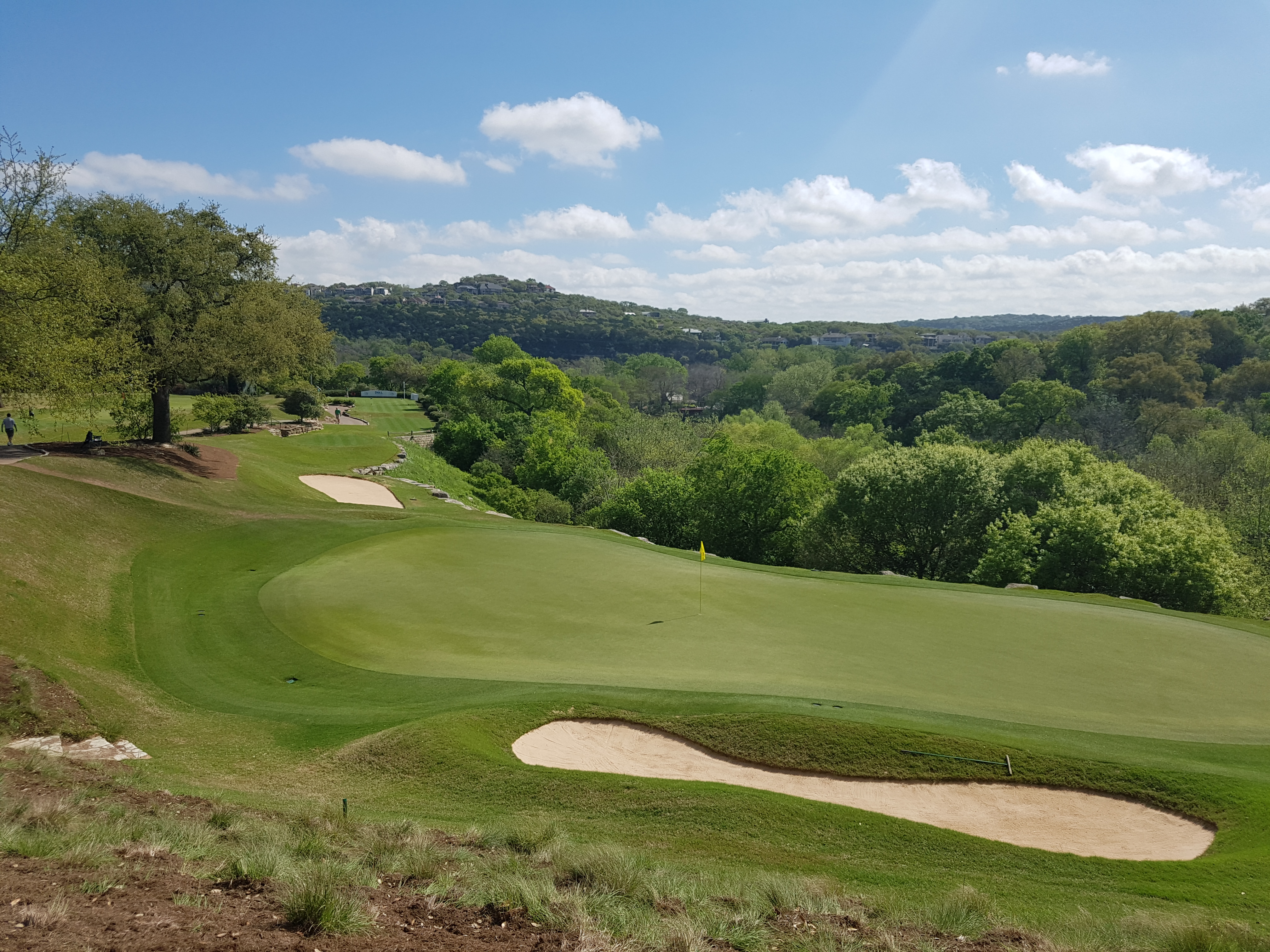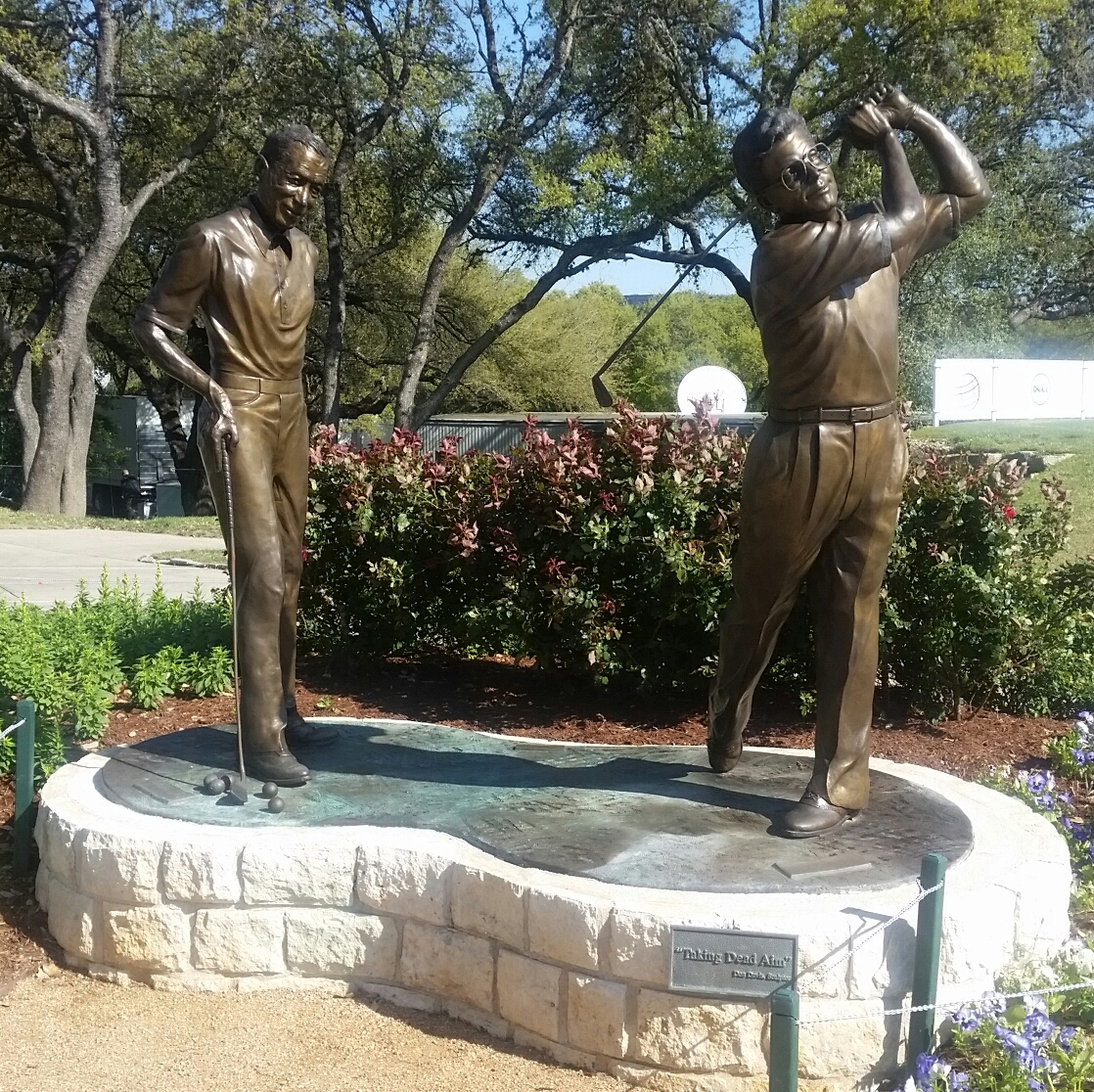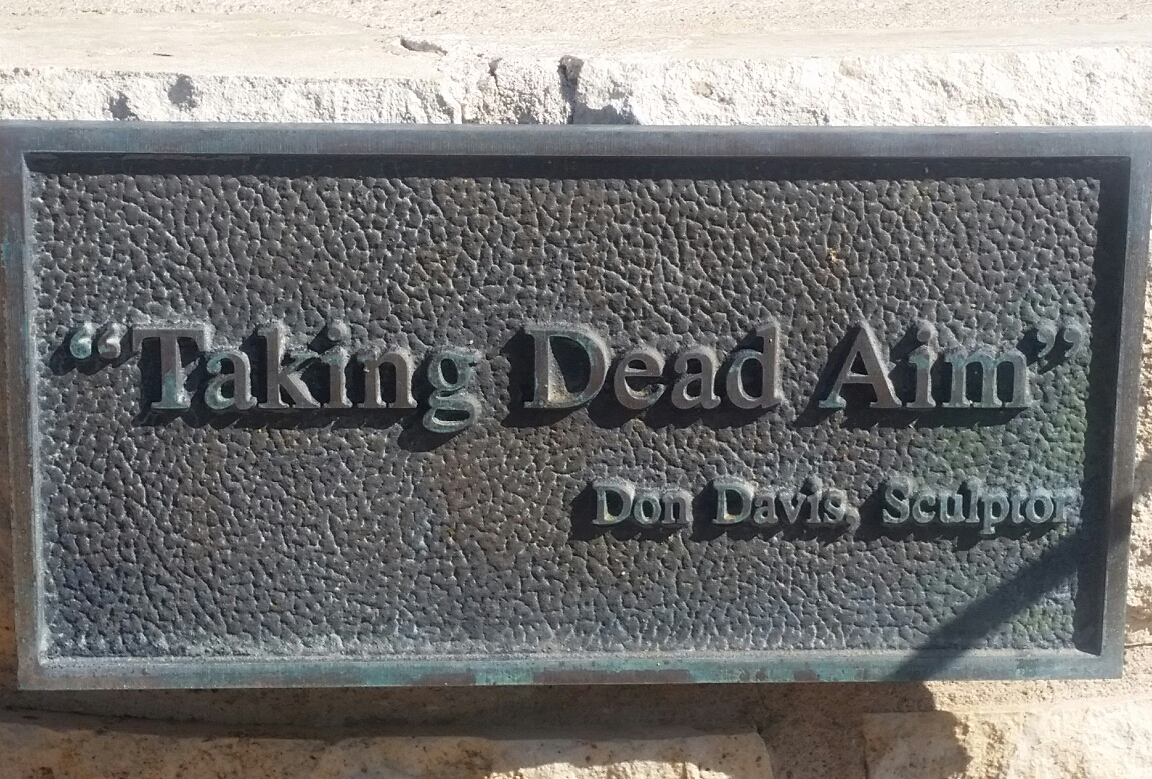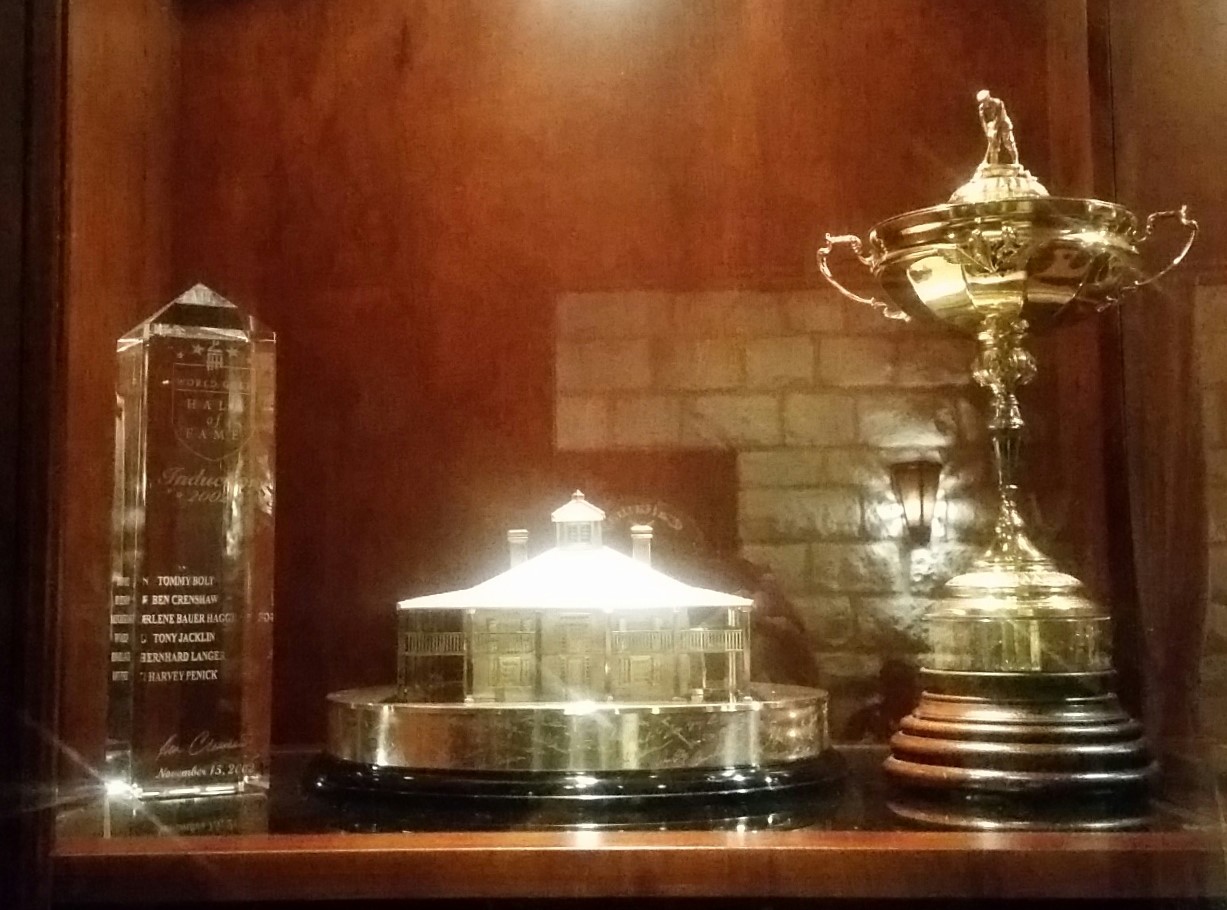Like most things in Texas, the Austin Country Club is a big golf course.
The course that again plays host, somewhat we understand controversially, to this week’s final hosting of the WGC – Dell Technologies Match-Play championship measures 7,062-yards, was carved out of hillsides, with many holes over-looking steep gorges, and also with a handful of holes running along the floodplain of the Colorado River in the north-western outskirts of the Texas capital.
The Austin Country Club was founded in 1899 and moved to its third and present site in 1984. It was designed by the husband-and-wife team of Pete and Alice Dye.
For reasons mentioned above, it was not one of Dye’s easier courses to build and Pete, after first seeing the land, remarked: “I thought I had enough land for 10 golf courses, but I’m not sure now if I can get in 14 holes.” Alice clearly didn’t hold back declaring: “It was a terrible piece of property”.
This is probably what first strikes you in walking the course and that is how did someone have the vision to build a golf course on the site with many of the holes carved out of hillsides, and many tees and greens requiring stone walls to be built to avoid collapsing into the deep gorges.
The easier holes to build must have been the half-a-dozen laid out along the floodplain of the Colorado River, and where the land was formerly a ranch.
The ‘upper holes’ run through the local neighbourhood, as Rory McIlroy found out a few years back when he put a tee-shot in his opening round match against Ian Poulter over a boundary fence and into a neighbour’s swimming pool alongside the fifth hole, and where the streets are named, not after anything golf-related, but honouring famed horse-racing tracks: Churchill Downs Drive, Kentucky Derby Drive, Ascot Cove Drive, Belmont Park Drive while it’s Long Champ Drive, and named after the famous Paris racetrack, that takes you to the front gates of the club.

Austin CC course and this par three showing how precise one must be with their shots. (Photo @TourMiss)
The Dye’s took on the challenge and began construction in 1982 just as the new Pennymaker Bridge was opened. The bridge is a dominant feature for five holes from 12th to 16th, as played in the Match-Play or three to seven for the club members.
The bridge carries the ‘Capital of Texas’ highway across the river and was named after the late Percy V. Pennybacker Jr., who designed bridges for the Texas Highway Department and was a pioneer in the technology of welded structures. Not sure what the ‘V’ stands for.
Alice Dye was noted as saying: “When Pete saw the bridge, he was just fascinated by that view. Bridges are very unique and Pete wanted that contrast”.
What makes Austin Country Club also special is its connection to renowned Harvey Penick. Penick was everything Texas golf. He was born in Austin in 1901 and died in Austin 90-years later. He began his golf career as a caddy at the club at age eight. He became the club’s assistant pro five years later, and after his graduation from high school, was promoted to head professional in 1923 at the age of 18-years, where he remained until 1971.
From 1971 on Penick continued teaching at the club, serving as “Professional Emeritus” until his passing in early April 1995.
Penick was the golf coach at the University of Texas from 1931 to 1963, coaching the Longhorns to 21 Southwest Conference championships in 33 years, including 20 out of 23 seasons from 1932 to 1954 (1932–38; 1940–47; 1949–52; 1954). Thanks here again to Wikipedia.

Statute of Harvey Penick and one of his Texas ‘students’ in 1992 US Open winner Tom Kite (Photo – @TourMiss)

‘Take Dead Aim’ what Harvey Penick would say to everyone teeing-up on the Austin CC course (Photoi – @TourMiss)
He coached the following World Golf Hall of Fame players: Tom Kite, Ben Crenshaw, Mickey Wright, Betsy Rawls, and Kathy Whitworth. Other outstanding players coached by Penick include Sandra Palmer, Judy Kimball, Wes Ellis, Terry Dill, Don Massengale, Rik Massengale, Davis Love Jr., and Ed White. In 1989, Penick was honored by the PGA of America as Teacher of the Year.
Penick was remarkably still giving lessons to Crenshaw from his deathbed and passed away on the Sunday prior to the 1995 Masters. Kite and Crenshaw were pall-bearers at the funeral on Wednesday and then arrived at Augusta later that night ahead of teeing-up the next day.
Four days later, Crenshaw broke down with tears streaming down his face in becoming the second oldest Masters champion, winning his second Masters at the age of 43. In the post-tournament interview, Crenshaw said: “I had a 15th club in my bag,” a reference to Penick.
Seven years after Penick’s death, in 2002, he was inducted into the World Golf Hall of Fame. There is now a statue of Penick with Kite near the 1st tee at the Austin CC (10th for the Match-Play), and with the caption ‘Taking Dead Aim’. It’s what Penick would say to all those teeing-off the first.
The WGC – Dell Technologies Match-Play championship course is being played from the ‘Harvey’ or back tees.
The clubhouse is a shrine to Penick, Kite and Crenshaw with rare photographs of Penick, copies of his famed ‘Little Red Book’, recognisable trophies such as the Ryder Cup, Kite’s 1992 US Open trophy and the Masters ‘clubhouse’ winner’s trophy. There’s also Kite’s 1997 and Crenshaw’s 1999 USA Ryder Cup captains golf bags.
As well, the Golf Hall of Fame trophy awarded posthumously to Penick in 2002, is proudly on display.






